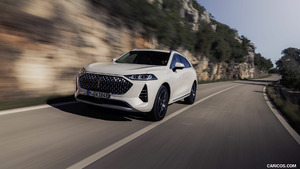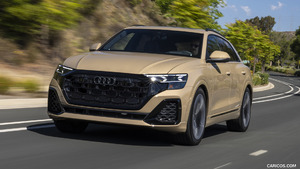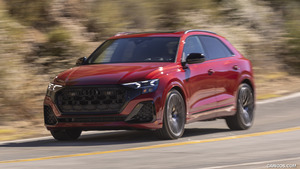2012 Ford Mustang Boss 302
Ford gave the green light only once before: In 1968, management approved a special Mustang – a car that sacrificed nothing in its quest to be the best all-around road-going performance machine ever created by Ford Motor Company. That car became the 1969 Mustang Boss 302, and it remains one of the world’s most sought-after examples of American performance.
Now, Ford has given the green light again for the 2012 Mustang Boss 302.
“The team at Ford wanted to offer their fellow Mustang enthusiasts something really special – a beautifully balanced factory-built race car that they could drive on the street,” explains Dave Pericak, Mustang chief engineer. “The Boss 302 isn’t something a Mustang GT owner can buy all the parts for out of a catalog or that a tuner can get by adding a chip. This is a front-to-back re-engineered Mustang with every system designed to make a good driver great and a great driver even better.”
To celebrate the racing heritage of the new Mustang Boss 302, Ford will also offer a limited number of Boss 302 Laguna Seca models, named for the track where Parnelli Jones won the 1970 Trans-Am season opener in a Boss 302. Aimed at racers more interested in on-track performance than creature comforts, the Boss 302 Laguna Seca has increased body stiffness, a firmer chassis setup and an aerodynamics package carried over almost in its entirety from the Ford Racing Boss 302R.
The Boss Track Attack program, offered through Team Mustang and Ford Racing, will feature a full Boss immersion, driving instruction and plenty of track time with engineers and racers. The experience is designed to give Boss owners a comprehensive, hands-on look at exactly what their cars are capable of – and just how much fun they can be.
Boss Track Attack will take place at Miller Motorsports Park in Tooele, Utah, outside of Salt Lake City. Boss owners need to make their own travel and lodging arrangements, but once in Utah, the full track experience – including cars for the event – is courtesy of Ford.
Philosophy and powertrain
The V8 engine team approached Boss from the top down: With 412 horsepower from 5.0 liters, the 2011 GT engine was already an incredible performer. Helping the intake build power, revised camshafts using a more aggressive grind are actuated with the same twin independent variable camshaft timing (Ti-VCT) mechanism used on the Mustang GT. More aggressive control calibration yields 440 horsepower and 380 lb.-ft. of torque, while still offering a smooth idle and low-end torque for comfortable around-town driving.
A race-inspired clutch with upgraded friction materials transmits power, while a short-throw, close-ratio six-speed manual transmission handles gear change duties.
Power is delivered to a 3.73-ratio rear axle using carbon fiber plates in the limited-slip differential to improve handling and longevity. For those who want even more precise control over power delivery, a torque-sensing (Torsen) limited-slip differential is an available option coupled with Recaro® front seats.
To ensure it sounds like a Boss up front, a specific intake system is tuned to feed the engine with minimum restrictions. A retuned induction sound tube provides concrete aural evidence of what’s occurring under the hood. Every Boss features a unique quad exhaust system: Two outlets exit in the rear similar to a standard Mustang GT. The other two outlets exit to either side of the exhaust crossover, sending exhaust through a set of metal discs that act as tuning elements before the pipes terminate just ahead of the rear wheel opening.
Suspension and steering
In keeping with the Boss mandate to provide the best-handling Mustang ever, the already strong Mustang GT suspension system has been further refined. Higher-rate coil springs on all four corners, stiffer suspension bushings and a larger-diameter rear stabilizer bar all contribute to the road racing mission, and Boss models are lowered by 11 millimeters at the front and 1 millimeter at the rear versus the Mustang GT. The real key to handling, though, is in the adjustable shocks and struts, standard on all Boss Mustang models.
To complement the suspension, the speed-sensitive electronic steering system has been retuned to maximize feedback and road feel to the driver. The driver is also given the option of fine-tuning the steering feel to his or her liking by selecting one of three settings through the instrument cluster menu: Comfort, normal and sport modes help offer track-tuned steering when desired without sacrificing low-speed maneuverability in parking situations and everyday commuting.
Similarly, Boss receives unique traction control system (TCS) and electronic stability control (ESC) settings to help drivers achieve maximum performance whether on the street or at the track. Both systems can be completely disabled in controlled track situations where maximum driver skill is utilized, or fully engaged for maximum safety during normal driving or in less-than-ideal traction conditions. Intermediate sport mode allows drivers to push their cars hard at the track without completely disabling the safety systems, permitting more aggressive driving before the traction control and ESC systems intervene.
TracKey, available after transfer of title to the owner and installed at the dealership, adds TracMode powertrain control software to the car for track use, providing full race calibration and two-stage launch control in addition to stock calibration, without compromising factory warranty. This software only is available to Boss owners after the vehicle is purchased and will be available later this summer.
As part of the TracKey software package, Ford engineers also devised a two-stage launch control feature similar to that used on the Cobra Jet race car. Using a combination of steering wheel buttons, drivers can set the tach needle to a desired launch rpm. Floor the throttle and the engine will rev to the preset rpm until the clutch is released, helping aid acceleration and vehicle control from a standing start.
Brakes, wheels and tires
Working in concert with the suspension upgrades, Boss 302 receives unique, lightweight 19-inch black alloy racing wheels in staggered widths: 9 inches in front, 9.5 inches in the rear. The Pirelli PZero summer tires are sized specifically for each end of the vehicle, with the front wheels receiving 255/40ZR-19 tires while the rear stays planted thanks to 285/35ZR-19 rubber.
Boss braking is also up to the challenge, using Brembo four-piston front calipers acting on 14-inch vented rotors up front. In the back, standard Mustang GT brakes are upgraded with a Boss-specific high-performance pad compound. Combined with vented brake shields and unique Anti-Lock Brake System (ABS) tuning, Boss drivers get maximum control and rapid, repeatable fade-free stops in road and race situations alike.
As a result 60-0 stopping distances for the Boss are improved by approximately three feet versus the Mustang GT with available brake package; combined with suspension and engine improvements, Boss is expected to show approximately a two-second lap time improvement over the GT on a typical road race course.
Exterior and interior design
True to its race-bred heritage, every component that could potentially aid aerodynamics or engine/brake performance was examined to make the car more competitive.
To set Boss apart, each car will have either a black or white roof panel, coordinated to the color of the side C-stripe. Available exterior colors are Competition Orange, Performance White, Kona Blue Metallic, Yellow Blaze Tri-Coat Metallic and Race Red.
Up front, a unique fascia and grille are highlighted by the blocked-off fog lamp openings and aggressive lower splitter, a version of the design used – and proven – on the Boss 302R race car. The front splitter is designed to function at high speeds by efficiently managing the air under and around the car. It helps to reduce underbody drag and front end lift while more effectively forcing air through the Boss-specific cooling system. At the rear of the car, the spoiler was chosen to complement the front aero treatment and minimize overall drag.
Inside, a unique Boss steering wheel covered completely in Alcantara suede complements the standard seats, which are trimmed in cloth with a suede-like center insert to firmly hold occupants in place. Boss customers who want the ultimate seating experience can select a package that includes Recaro buckets, designed by Ford SVT in cooperation with Recaro for high-performance Mustang models, and shared between the Boss and GT500.
The 2012 Mustang Boss 302 is built at the AutoAlliance International Plant in Flat Rock, Mich.



















